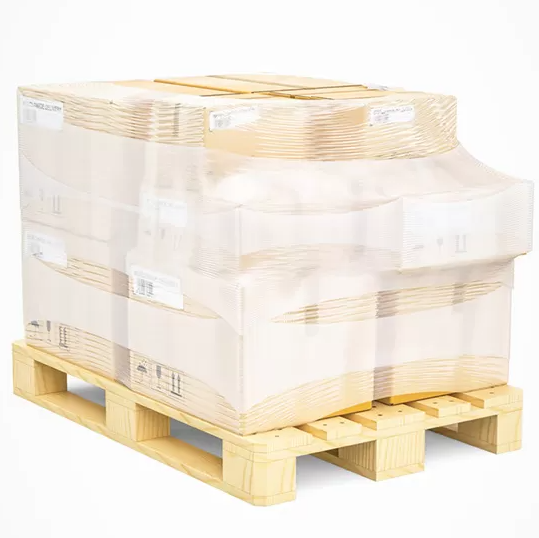+86 022 2376 3704
+86 022 2376 3704
Company Event
May. 07, 2024
Biodegradable films are a type of material designed to decompose naturally in the environment, typically through the action of microorganisms such as bacteria, fungi, and algae. These films are increasingly used as an alternative to traditional plastics, which can persist in the environment for hundreds of years, causing significant ecological damage. The development and use of biodegradable films are driven by the need for sustainable packaging solutions that mitigate the environmental impact of plastic waste.
Biodegradable films can be made from a variety of natural and synthetic materials:
Natural Polymers: These include polysaccharides (such as starch, cellulose, and chitosan), proteins (such as gelatin, casein, and soy protein), and lipids. These materials are derived from renewable sources and are typically compostable, breaking down into water, carbon dioxide, and biomass under composting conditions.
Biodegradable Synthetic Polymers: These include polylactic acid (PLA), polyhydroxyalkanoates (PHA), and polybutylene succinate (PBS). These materials are designed to degrade under certain environmental conditions and can be synthesized through microbial processes or from petrochemical resources.
Blended Materials: Combining natural and synthetic polymers can enhance the properties of biodegradable films, making them more suitable for various applications. For instance, blending starch with PLA can improve film flexibility and strength.
Biodegradable films are engineered to possess specific properties that make them suitable for different applications. Key properties include:
Biodegradability: The primary feature of these films is their ability to break down into natural substances without leaving harmful residues. The rate of biodegradation depends on factors such as temperature, moisture, oxygen availability, and the presence of microorganisms.
Mechanical Properties: These include tensile strength, elasticity, and barrier properties. Biodegradable films must be strong enough to protect their contents during handling and transportation but flexible enough to conform to different shapes and uses.
Barrier Properties: Effective barrier properties against gases (such as oxygen and carbon dioxide), moisture, and aroma are crucial for food packaging applications. These properties help in preserving the quality and extending the shelf life of packaged goods.
Transparency and Printability: For many packaging applications, especially in the food industry, transparency and the ability to print on the film are important for product visibility and marketing.

Biodegradable films are used in a wide range of applications, including:
Food Packaging: One of the most significant uses is in food packaging, where biodegradable films can reduce the environmental impact of single-use plastics. They are used for wrapping fresh produce, bakery products, and ready-to-eat meals.
Agriculture: Biodegradable mulch films are used in agriculture to suppress weeds, retain soil moisture, and enhance crop yields. These films can be plowed into the soil after use, where they decompose naturally.
Medical and Pharmaceutical: Biodegradable films are used in medical applications for wound dressings, controlled drug delivery systems, and biodegradable implants.
Consumer Goods: They are also used in products such as biodegradable garbage bags, shopping bags, and packaging for non-food items.
While biodegradable films offer numerous environmental benefits, including reduced landfill waste and decreased pollution, there are challenges associated with their use and production:
Degradation Conditions: Biodegradable films require specific conditions to break down efficiently. For instance, PLA films degrade best in industrial composting facilities, which may not be widely available. If disposed of improperly, these films may not degrade as intended.
Cost and Performance: Biodegradable films can be more expensive to produce than conventional plastics, and their mechanical and barrier properties may not always match those of traditional materials. Continued research and development are necessary to improve the performance and cost-effectiveness of these films.
Public Awareness and Infrastructure: Effective use of biodegradable films requires public awareness about proper disposal methods and the development of appropriate waste management infrastructure.
Biodegradable films represent a promising solution to the environmental challenges posed by traditional plastics. They offer a way to reduce plastic pollution and promote sustainability in various industries, particularly packaging. However, to fully realize their potential, advancements in material science, public education, and waste management infrastructure are essential. As technology and awareness progress, biodegradable films are likely to play an increasingly important role in creating a more sustainable future.
Whether you'd like to get more info on what, need help with what you're creating anytime… anywhere.
Yuanxian High-tech Material is a company serving a worldwide customers base providing innovative and reliable product solution that recognizes the value of customer care.
Quick Links
Product Category
Subscribe Newsletter
Welcome to subscribe toour email message!
